The Three Gorges Dam is China's largest construction project since the Great Wall. It has a long and controversial history. The idea was first proposed in 1919, but China didn't have the technology or money for such an endeavor. In 1944, American engineer John Savage (the designer of Hoover Dam) surveyed the area and drew up a dam proposal. Due to major political setbacks, it wasn't until the 1980s that the plans were revived. Many people opposed the project but were jailed. In 1992, a vote was put to the National People's Congress. One-third opppossed it. In 1993, construction officially began.
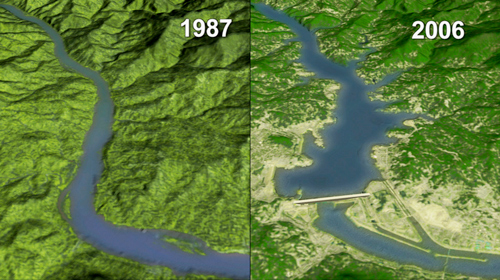
|
Reasons for the dam
|
| 1) Flood control |
The Yangtze has a major flood every 10 years. In the 1987 flood, 300,000 people died. In the 1998 flood, 300 million were effected and millions died. The dam can protect the middle and lower river from this ever happening again. |
| 2) Navigation |
The increased water levels have covered dangerous rapids and rocks. The waters are now safer to navigate. |
| 3) Energy |
The dam will produce 10 - 15% of China's needs. It is clean power (as opposed to coal, which pollutes the air and emits greenhouse gasses). It will generate power equal to 15 nuclear power plants. |
| 4) Growth |
The dam will provide economic growth for the country. New jobs and buildings are created as people move from the country to the city. |
|
Reasons against the dam
|
| 1) Pollution |
The dam will significantly decrease the river's flushing capacity. In 80 years, shipping could be stopped behind of the dam because of sedimentation build-up. Farmers become dredgers, cleaning boats and collect garbage every day, to prevent the river from becoming a cesspool. |
| 2) Erosion |
Mountains are being eroded from beneath and begin to collapse. Landslides threaten villages. |
| 3) Extinction |
Habitat is being destroyed, and many species are being lost, most notably the river dolphin. More water has caused an increase in temperatue. The Yangtze sturgeon, who normally swim back from the sea to the higher plateau to spawn, can no longer reach their breeding grounds. |
| 4) Relocation |
By the time the dam is completed, three million people will have been relocated. Many have given up family homes and forced to move far away, creating a conflict with cultre and langugue. Ancestoral tombs have been flooded. |
The location of San Dou Ping village as the site for the dam had several reasons. 1) This was a wide and broad area of the river. 2) Most of the rocks in the area are composed of ocean sediment, but this section was made of hard granite. 3) There was a small island in the middle of the river that served as a building platform.
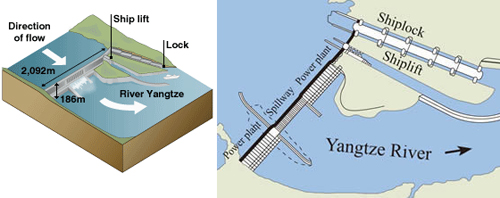
The hillside was dynamited in order to make the shiplock.
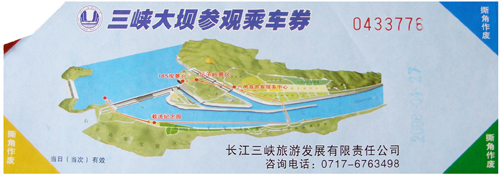
The entrance ticket
The shiplock is built in five levels.

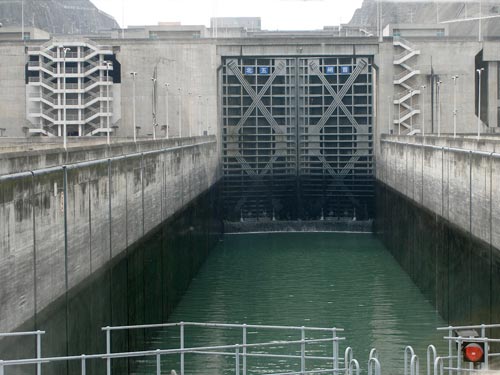
The lowest level of the upstream locks
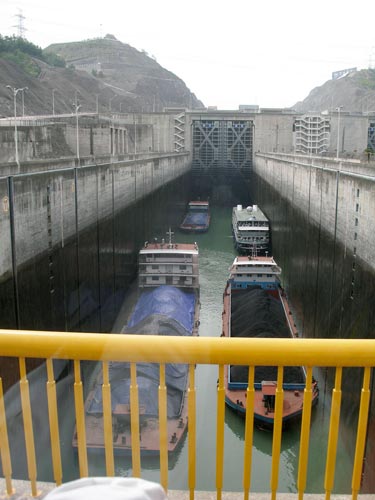
The lowest level of the downstream locks
First viewpoint
From this vantage point, one gets a good overview of the five levels of locks.
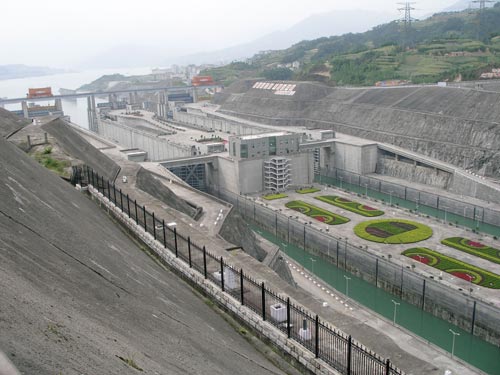
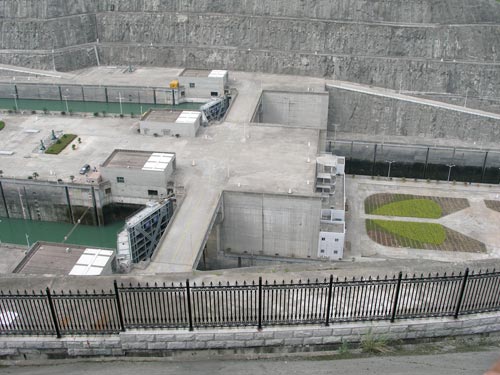
Model room
A large model helped give an overview of the area.

Viewed from downstream: the dam (left), the boat elevator (middle) and the shiplocks (right)
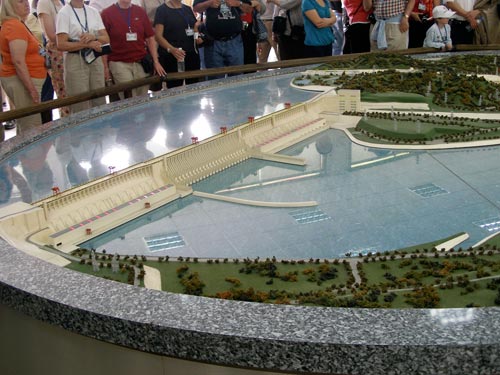
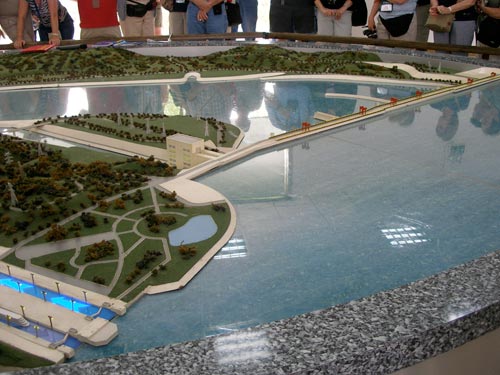
Viewed from upstream
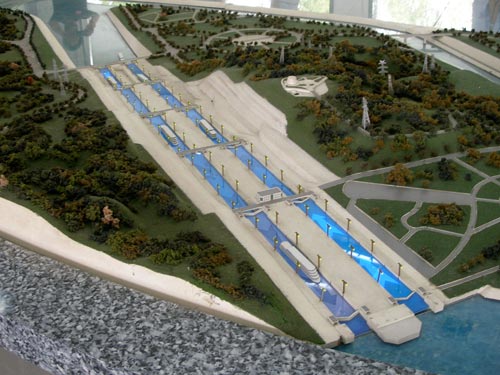
Lighted arrows show the direction of the locks, going upstream or downstream.
Observation area
From the top of the tower, one gets a good view of the dam.
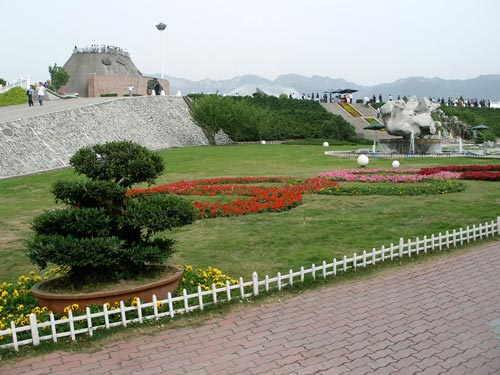
The observation tower
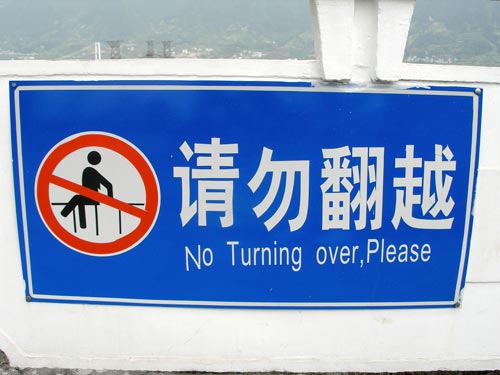
Sign on the tower railing

View from the tower
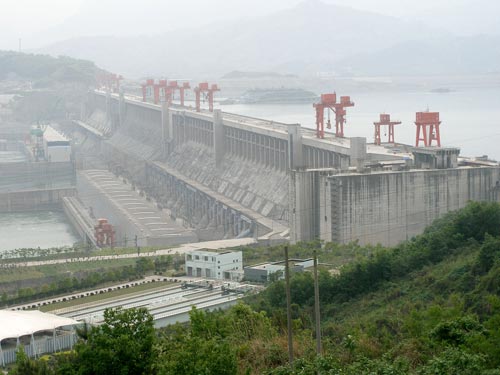
The dam is 1.4 miles long, over 600 feet tall and has 26 turbines for generating electricity.
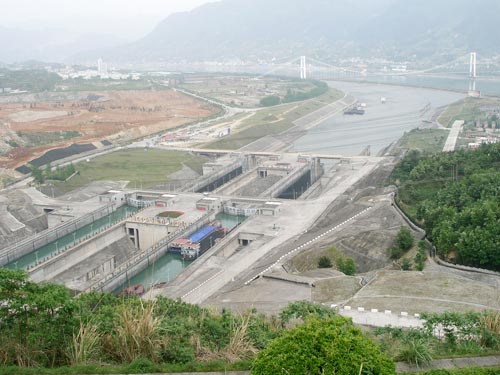
A look back down at the shiplock and Yangtze River
Second viewpoint
This viewpoint is located upstream, behind the dam.
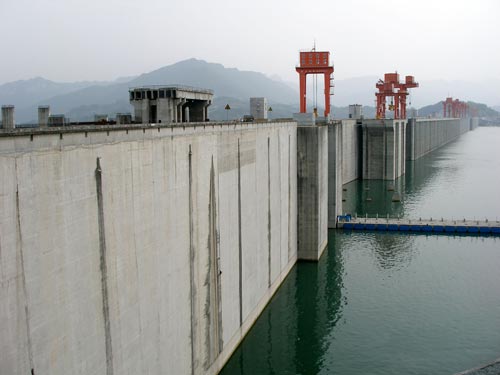
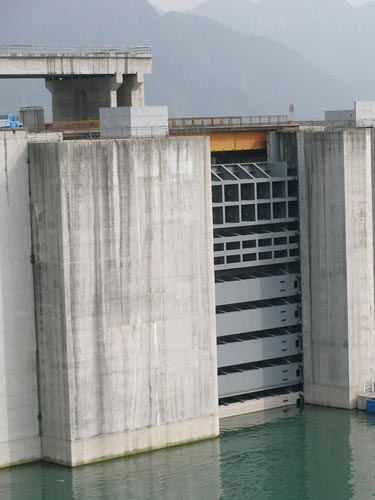
The top of the boat elevator (or ship lift).
A boat goes into the box with water which is then raised using cables. Gears and bolts help secure it in case the cable breaks. The trip takes about 42 minutes. Boats over 3,000 tons must use the locks.
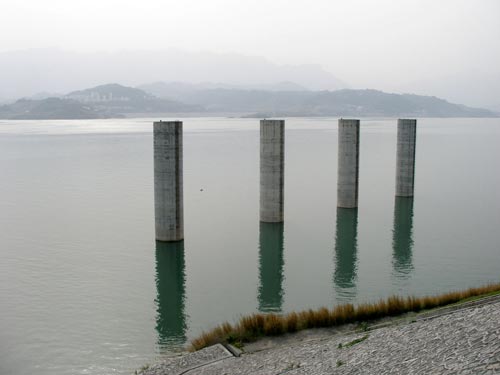
When the water level is maximum (361 feet above the downstream river level), the reservoir behind the dam is about 410 miles in length and .7 miles wide.
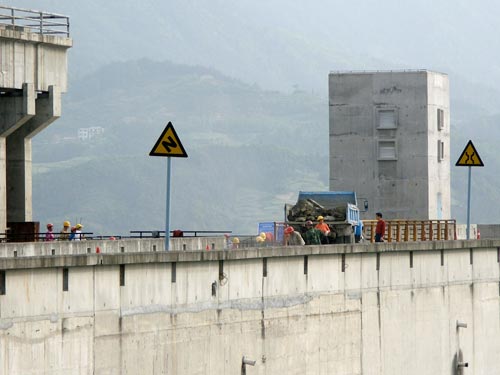
Work on the dam nears completion
So far, it has taken 15 years, close to $23 billion, 28 million cubic meters of concrete, 463,000 metric tons of steel, and 20,000 workers to build the dam. Now there are only about 1,000 workers since the project is almost done.
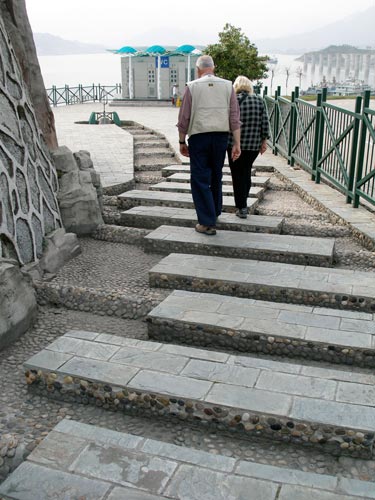
Hank and Jean navigate the artful steps.
Return to the boat
In order to get both to the tour bus and back to the boat, we were required to run a gauntlet of extremely aggressive vendors.

The vendors wait with anticipation as we exit the bus.
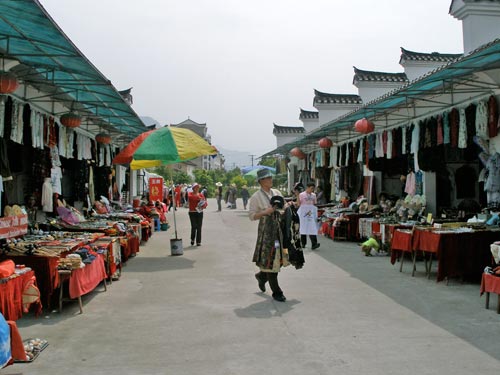
The shopping street between the boat and the tour bus

